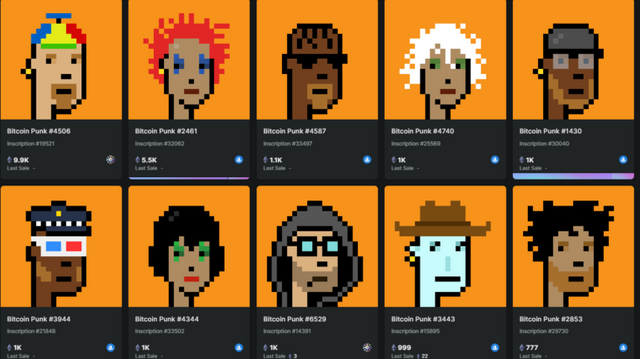Have you ever wondered why sometimes your Bitcoin transactions come with a hefty fee? Well, one of the reasons behind this is something called "ordinals" on the Bitcoin blockchain. Don't worry if you've never heard of them before – we're here to break it down for you in a fun and easy-to-understand way.

source
What are Ordinals?
In the world of Bitcoin, ordinals refer to the order in which transactions are processed and added to the blockchain. You see, the Bitcoin network can only handle a limited number of transactions per block, and miners prioritize transactions based on factors like transaction size and fees. This is where ordinals come into play.
When there's a high demand for transactions, the competition to get into the next block increases. As a result, people are willing to pay higher fees to ensure their transactions are processed quickly. This creates a sort of "bidding war" among users, driving up the average transaction fee.
Why Do Ordinals Cause High Transaction Fees?
Now that we know what ordinals are, let's dive into why they contribute to high transaction fees. The Bitcoin network has a limited capacity, and miners have to choose which transactions to include in the next block. To make this decision, they look at the fees attached to each transaction.
When there are more transactions than the network can handle, users start to increase their fees to make their transactions more attractive to miners. This creates a snowball effect, as other users follow suit to avoid being left behind. As a result, the average transaction fee goes up, and those who can't afford to pay the higher fees have to wait longer for their transactions to be processed.
How Can We Tackle High Transaction Fees?
While ordinals are just one of the factors contributing to high transaction fees, there are a few ways to address this issue:
Off-chain solutions: Technologies like the Lightning Network allow users to make transactions off the main Bitcoin blockchain, reducing the demand for block space and lowering fees.
Fee estimation tools: Wallets and services that provide accurate fee estimates can help users avoid overpaying for transactions, keeping fees in check.
Scaling solutions: As the Bitcoin network continues to evolve, developers are working on scaling solutions to increase the number of transactions that can be processed per block, reducing the pressure on fees.
In Conclusion
Ordinals on the Bitcoin blockchain play a significant role in determining transaction fees. As the demand for block space increases, users compete to have their transactions processed quickly, driving up fees in the process. By understanding how ordinals work and exploring solutions to tackle high transaction fees, we can continue to enjoy the benefits of Bitcoin without breaking the bank.
Thanks for sharing the post, but please note that this community is for ADMIN, MOD, DEV, WITNESS, SR only. General users are not allowed to post, we hope you understand.
Downvoting a post can decrease pending rewards and make it less visible. Common reasons:
Submit